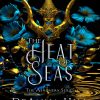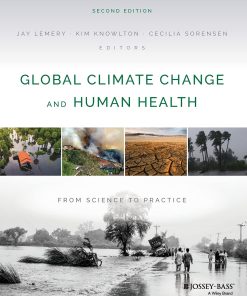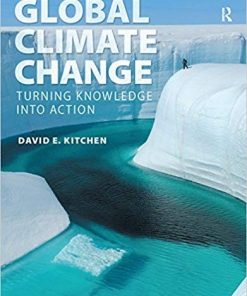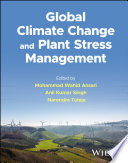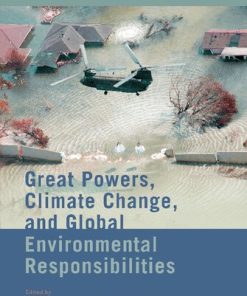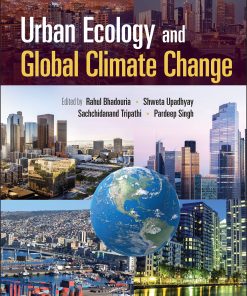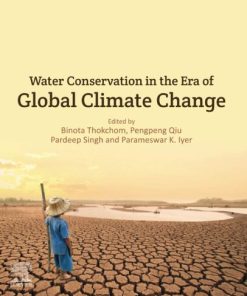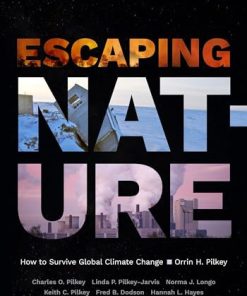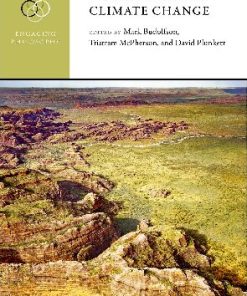(Ebook PDF) Mobilizing Hope Climate Change and Global Poverty 1st edition by Darrel Moellendorf ISBN 9780190875633 0190875631 full chapters
$50.00 Original price was: $50.00.$25.00Current price is: $25.00.
(Ebook PDF) Mobilizing Hope Climate Change and Global Poverty 1st edition by Darrel Moellendorf –Ebook PDF Instant Download/Delivery: 9780190875633, 0190875631
Instant download Full Chapter of Mobilizing Hope Climate Change and Global Poverty 1st edition after payment
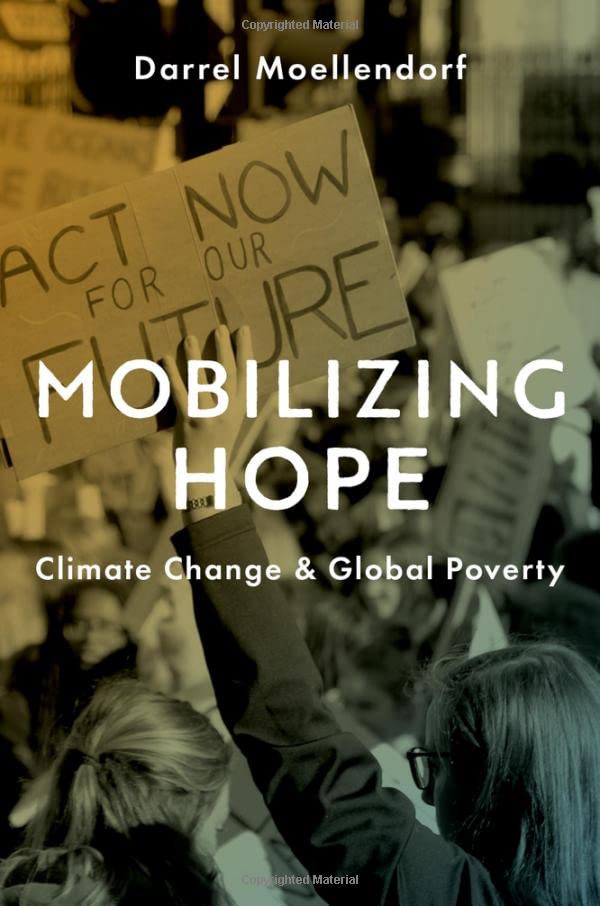
Product details:
ISBN 10: 0190875631
ISBN 13: 9780190875633
Author: Darrel Moellendorf
Table of contents:
1. What’s It All About? A Legacy for the Next Generation of Scholars in Evolutionary Medicine and Bioarchaeology
Kimberly A. Plomp, Charlotte A. Roberts, Sarah Elton, and Gillian R. Bentley
1.1 Background
1.2 Palaeopathology and Medicine
1.3 Aims of the Book
1.4 Thematic Overview
1.5 The One Health Initiative and Future Directions
1.6 Conclusion
References
2. Developmental Origins of Health and Disease (DOHaD): Perspectives from Bioarchaeology
Julia Gamble and Gillian Bentley
2.1 The Developmental Origins Model in Contemporary and Past Populations
2.2 History of Development of the DOHaD Model
2.3 Life Course Approaches to Health
2.4 Exploring Explanatory Mechanisms Between Early Life Development and Later Life Health
2.5 Future Directions
References
3. Acquired Spinal Conditions in Humans: The Roles of Spinal Curvature and the Shape of the Lumbar Vertebrae
Kimberly A. Plomp, Ella Been, and Mark Collard
3.1 Introduction
3.2 Adaptations for Bipedalism in the Human Vertebral Column and Lumbar Vertebrae
3.3 Clinical Evidence for an Impact of Spinal and Vertebral Shape on Spinal Health
3.4 Palaeopathological and Comparative Anatomical Evidence for an Impact of Spinal and Vertebral Shape
3.5 Evolutionary Origins of Vertical Intervertebral Disc Herniation and Spondylolysis
3.6 Potential Biomechanical Explanations for Links Between Vertebral Traits and Acquired Spinal Disorders
3.7 Future Directions
3.8 Conclusions
References
4. Birthing Humans in the Past, Present, and Future: How Birth Can Be Approached Holistically Through Bioarchaeology
Sarah-Louise Decrausaz and Frances Galloway
4.1 Introduction
4.2 How Does Research on Childbirth in the Past Contribute to Understanding the Evolution of Human Birth Mechanisms?
4.3 How Do Bioarchaeology and Palaeopathology Offer Unique Perspectives on Childbirth?t
4.4 How Can Knowledge of the Past Contribute to Modern Clinical Research on Childbirth and Obstetric Care?
4.5 Conclusion
References
5. Isotopic Reconstruction of Ancient Human Diet and Health: Implications for Evolutionary Medicine
Nicole Burt and Alexandra M. Greenwald
5.1 Introduction
5.2 Stable Isotope Basics
5.3 Diet, Pathology, and Evolutionary Implications
5.4 Isotope Applications in Evolutionary Medicine
5.5 Culturally Sensitive and Inclusive Applications of Evolutionary Medicine
References
6. Developmental, Evolutionary, and Behavioural Perspectives on Oral Health
Tanya M. Smith and Christina Warinner
6.1 Teeth as Childhood Record Keepers
6.2 Those Pesky Wisdom Teeth
6.3 Our Teeth Are Never Alone: The Oral Cavity as a Microbial Culture Dish
6.4 Caries, Gum Disease, and Tooth Loss: Additional Diseases of Civilization?
6.5 Use It or Lose It: Evolutionary and Behavioural Perspectives on Orthodontics
6.6 Conclusions and Future Directions
References
7. Palaeoecology: Considering Proximate and Ultimate Influences on Human Diets and Environmental Responses
Malcolm C. Lillie and Sarah Elton
7.1 Introduction
7.2 Environments and Health Status Along the Dnieper River
7.3 Discussion
7.4 Conclusion
References
8. Human Resistance and the Evolution of Plague in Medieval Europe
Kirsten Bos and Sharon N. DeWitte
8.1 Plague in the Past and Today
8.2 Ancient DNA Analyses of Medieval Human Populations
8.3 Bioarchaeological Analyses of Plague
8.4 Conclusion
References
9. Leprosy is Down but Not Yet Out: New Insights Shed Light on Its Origin and Evolution
Charlotte Roberts, David M. Scollard, and Vinicius M. Fava
9.1 Introduction
9.2 Leprosy: Present and Past
9.3 The Origin and Evolution of Leprosy
9.4 Leprosy in the Past
9.5 Conclusions
9.6 Future Directions
References
10. Preventable and Curable, But Still a Global Problem: Tuberculosis from an Evolutionary Perspective
Charlotte A. Roberts, Peter D.O. Davies, Kelly E. Blevins, and Anne C. Stone
10.1 Introduction
10.2 What Is Known About Tuberculosis (TB) Today
10.3 What Do We Know About TB in the Past?
10.3 Synthesis of the Skeletal and Biomolecular Evidence of TB from a Global Perspective
10.4 Discussion
10.5 Conclusions
References
11. Evolutionary Perspectives on Human Parasitic Infection: From Ancient Parasites to Modern Medicine
Marissa L. Ledger and Piers D. Mitchell
11.1 Introduction
11.2 Evidence for Parasites Throughout Human History
11.3 Human-Parasite Co-evolution
11.4 Applications of Palaeoparasitology and Human–Parasite Evolution
11.5 Conclusions
References
12. Cardiovascular Disease (CVD) in Ancient People and Contemporary Implications
Randall C. Thompson, Chris J. Rowan, Nicholas W. Weis, M. Linda Sutherland, Caleb E. Finch, Michaela F. Harrod
12.1 Introduction
12.2 The Evidence for Ancient CVD
12.3 Other CVDs Seen in Mummies
12.4 CVD in Great Apes
12.5 Discussion
References
13. Connecting Palaeopathology and Evolutionary Medicine to Cancer Research: Past and Present
Carina Marques, Zachary Compton, and Amy M. Boddy
13.1 Introduction
13.2 Cancer in Evolutionary Medicine (EM)
13.3 Cancer in Palaeopathology
13.4 Discussion: Cancer Is Not a New Disease
13.5 Conclusion and Future Prospects
References
14. Stress in Bioarchaeology, Epidemiology, and Evolutionary Medicine: An Integrated Conceptual Model
Daniel H. Temple and Ashley N. Edes
14.1 Introduction
14.2 Starving Animals and Active Glands: Early Models of Stress in Experimental Settings
14.3 From the Lab to the Field: Formalized Studies of Stress and Environment
14.4 Beyond Cortisol: A Multi-Faceted Approach to Stress Physiology
14.5 Thrifty Phenotypes, Plasticity, and Constraint: The Emergence of a Life History Perspective
14.6 Stress in the Past: Foundational Research in Bioarchaeological Approaches to Physiological Perturbations
14.7 Paradox, Promise, and the Life History Framework: Contemporary Studies of Stress in Bioarchaeology
14.8 Conclusions
References
15. Metabolic Diseases in Bioarchaeology: An Evolutionary Medicine Approach
Jonathan C. Wells, Nellissa Y. Ling, Jay T. Stock, Hallie Buckley, and William R. Leonard
15.1 Introduction
15.2 Background to Gout, DISH, and Type 2 Diabetes Mellitus (T2DM)
15.3 Models of the Aetiology of Metabolic Disorders
15.4 Conclusions
References
16. The Palaeopathology of Traumatic Injuries: An Evolutionary Medicine Perspective
Ryan P. Harrod and Anna J. Osterholtz
16.1 An Evolutionary Medicine Approach to Traumatic Injury in the Past
16.2 Understanding Biomechanics and Biology
16.3 The Physiological Impact of Traumatic Injuries
16.4 Reconstructing an Individual’s Lived Experience
16.5 Using Palaeopathology to Understand Trauma in the Past
16.6 Trauma as Part of Syndemics and the Importance of the One Health Approach
16.7 Conclusion
References
17. Uncovering Tales of Transmission: An Integrated Palaeopathological Perspective on the Evolution of Infectious Disease
Elizabeth W. Uhl and Richard Thomas
17.1 Overview
17.2 Shared Pathogens in Sparse Populations: Tapeworms (Taeniid sp.) in Hunter-Gatherers
17.3 From Sparse to Crowded Populations and From Humans to Animals to Humans: The Mycobacterium Tuberculosis Complex
17.4 Infection Transmission by a Vector: Farming, Urbanization, and the Rise of Plasmodium falciparum
17.5 Herding, Farming, and Warfare: Transmission of Shared Intracellular Bacterial Pathogens: Brucella spp.
17.6 Urbanization, War, and Conquest: Morbilliviruses—Shared Pathogens in Crowded Environments
17.7 Conclusions
References
18. Now You Have Read the Book, What Next?
Gillian Bentley, Charlotte A. Roberts, Sarah Elton, and Kimberly A. Plomp
References
People also search:
how does global warming affect poverty
how does poverty affect climate change
what are the effects of global poverty
hope in a changing climate
climate change hopelessness
You may also like…
Earth Sciences - Geography
Global Climate Change and Human Health 2nd Edition Jay Lemery
Earth Sciences - The Environment
Engineering - Civil & Structural Engineering
Jurisprudence & Law - Environmental Law
Water Conservation in the Era of Global Climate Change 1st Edition Binota Thokchom
Engineering - Environmental
Biography & Autobiography - Business & Finance
Politics & Philosophy - Philosophical Positions & Movements


